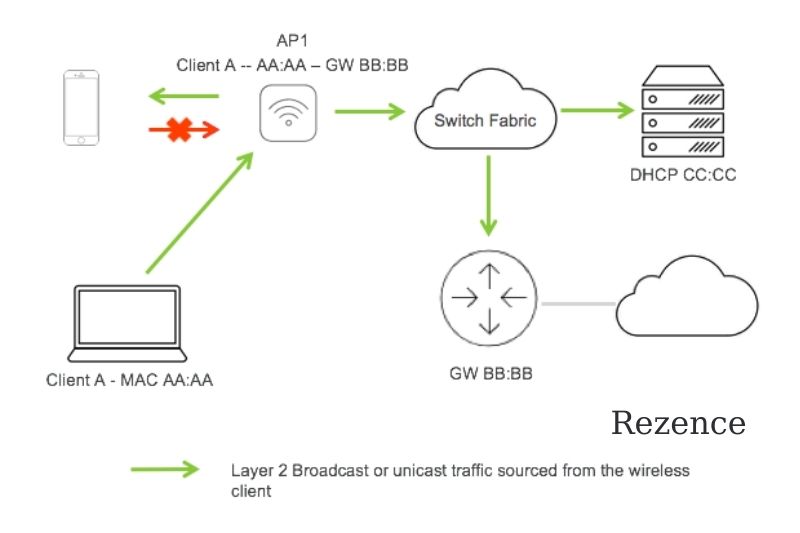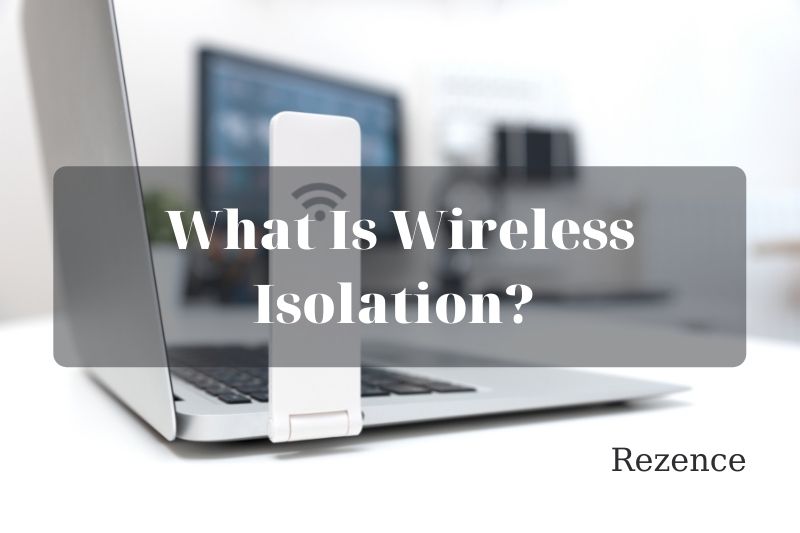Definition Of Wireless Isolation
What exactly is wireless isolation? Our readers might believe that we are describing WiFi-based home quarantine in the current COVID-19 environment. Wireless isolation is a setting on a WiFi router that can be used to isolate your WiFi network. It “locks down” your WiFi network. Below are the details.

How Does Wi-Fi Isolation Work?
Wireless isolation creates a virtual network between wireless devices, where each device is an independent entity. Network administrators can easily dissociate malicious network traffic running on the public point of a WiFi network from the main control network.
The main network is protected from any unsolicited network traffic that may contain viruses, Trojan horses, or worms.
This feature, in simple terms, restricts and confines the clients who use the same Wi-Fi network. They cannot communicate with one another or with other wired devices. They can only access the Internet.
Titles May Change, But The Song Remains The Same
Wireless Isolation is referred to by many router manufacturers as “Station Isolation”, “Access Point (or AP), Isolation”, “Set Service Identification (SSID) Isolation” and “Client Isolation.” Asus calls the function “Access Internet.”
Now-dark wirelessisolation.com explains: “When (the Wireless Isolation) setting is enabled, it prevents a computer connected to a network by a wireless connection from accessing (other) computers and resources connected to the network by a wired connection. It prevents wirelessly connected devices from connecting to each other wirelessly.
If you don’t mind the reference to pandemics, “Quarantining” an isolated device prevents it from accessing a router, host computer, or network server.
Wireless isolation prevents users of a particular SSID (WiFi network), from accessing data from other devices within the same SSID as well as devices that serve the SSID via a LAN.
Enabling Wireless Isolation on a router will allow any WiFi client (read: tablet, smartphone, laptop) to access the Internet only. To enable Wireless Isolation, devices must connect to the router using an Ethernet cable.
This allows users to see other network devices. Wireless isolation creates a virtual network that is unique to each wireless device connected to a WLAN.
Wireless Isolation And Guest Network
Depending on the router you choose, either one or both of these features will be available. Many “home” routers (i.e. inexpensive) have neither.
You’re correct if you already know that a guest network is a two-way setup of SSIDs. Visitors are WiFi isolated when a router can be configured to provide both a secure primary network (say for you and your spouse) and an isolated sub SSID network for guests.
A WiFi router can be configured to limit guests’ and your children’s Internet usage. This could include allowing them to only go online during certain hours or throttle their bandwidth usage, or blocking them from visiting certain IP addresses.
If your router uses dual-band connectivity (2.4 GHz or 5 GHz), you could limit them to one band.
Your intrepid blogger discovered, much to his dismay, that WiFi routers can block a device’s unique physical media access control address (MAC) address. Sometimes public WiFi is not always “public“.
Wireless isolation is simple and straightforward. Enable the isolation option to isolate all client devices from other devices. It’s as simple as that.

Add Wireless Isolation To Your Current Router
You may have listened to our advice and purchased your WiFi router rather than renting it from an ISP. You bought a low-quality router without Wireless Isolation. What should you do?
You don’t have to worry about it; there may be a firmware update that offers a range of capabilities for your particular router model. DD-WRT is a Linux-based project that was created to replace the default firmware of router manufacturers.
You can add functionality to your router by modifying it with DD-WRT open-source firmware.
If you are curious, the letters “DD” refer to German license plates for Dresden-area vehicles (where project directors lived), while the letters “WRT” refer to the Linksys WRT54G router which was a legacy product that was sold between 2002 and 2004.
The WRT54GL is the current version of this router, which can be found on Amazon.
DD-WRT provides features for your router such as:
- Bandwidth monitoring
- Multiple SSIDs
- Endpoint access control (e.g. Wireless Isolation).
- Quality of Service (QoS).
- OpenVPN
- Dynamic DNS (DDNS).
- iptables firewall
- And much more
Are you a candidate to upgrade your router’s DD-WRT firmware? This list will help you determine. READ THIS CAREFULLY in order to ensure your hardware is eligible.
The Linksys WRT54GL router is a great choice if you don’t like the idea of configuring multiple functions on your WiFi router. It’s inexpensive and easy to set up, including Wireless Isolation.
Do I Need To Enable Wireless Isolation On My Wifi Router?
Yes, in a word. If you are a manager of a business that has a public WiFi network, the answer is two words: ABSOLUTELY YES. Are you willing to allow WiFi users access to your servers, printers, and other systems? You wouldn’t believe so.
Wireless isolation also protects against Man-in-the-Middle attacks (MITM). ARP Poisoning and ARP Spoofing are two examples of MITM attacks.
We have already discussed MITM attacks; Benmin Smith, my IAG colleague, explains them here. You can also read our article about WiFi Pineapple to learn more about Pineapple MITM.
Address Resolution Protocol (ARP), Spoofing pings devices to determine their physical Ethernet addresses. Hackers can ping a target device by using an access point’s IP address to spoof, and trick it into giving its MAC address.
Once this happens, the barn door opens and all data and communications are visible to hackers.
ARP poisoning can lead to Dedicated Denial of Service attacks (DDoS), at the LAN-level. This is done by simply hijacking and dropping/not forwarded data packets that are intended for the target user.
How Do I Enable Wireless Isolation On My Current Router?
Wireless isolation can be enabled through your router’s web interface, just like other features. The option can be found under advanced wireless settings.
The path to Wireless isolation on some Linksys routers looks like this:
Wireless > Advanced Wireless Settings> AP Isolation
You may also find the Wireless Isolation option under the Advanced Setup tab on other routers such as most NETGEAR models. Although each router manufacturer refers to it in a different way, the name “isolation” is common.
This feature is not available on every router. Don’t worry if your router doesn’t have Wireless Isolation. It is possible that your router model has a firmware update with multiple capabilities. If that is not the case, you may be able to modify your router using DD-WRT open-source firmware.
DD-WRT, a Linux-based project, is designed to replace the default firmware of router manufacturers. It can increase your router’s capabilities and provide additional features, such as:
- Multiple SSIDs
- Bandwidth monitoring
- Endpoint access control (Wireless Isolation).
- OpenVPN
- Quality of Service (QoS).
- IPset and Iptables (on certain versions) and SPI firewall
- Dynamic DNS (DDNS).

How Does Wireless Isolation Feature Affect Performance?
Enabling this feature can often stop certain wireless features from working. If Wireless Isolation is enabled, Google Chromecast can’t communicate with other devices. This issue can be fixed by disabling Wireless Isolation from your router and/or Wi-Fi extender.
FAQs

Is Wireless Isolation Good For You?
Wireless Client Isolation prevents wireless clients from communicating with each other. This feature is useful for guests and BYOD SSIDs, because it provides additional security to prevent attacks and threats between wireless clients.
How Can I Disable Wi-Fi Isolation
You can turn off Wi-Fi Isolation by going to the Wireless > Advanced Settings page through your router’s website. Locate the Wi-Fi Isolation area and uncheck it. You can also refer to the manual of your router to disallow Wi-Fi isolation on your particular router model.
Do I Need To Turn Off Ap Isolation?
One word: Yes. Absolutely, if your business has a public Wi-Fi network.
How Do I Secure My Guest Wi-Fi?
These are quick and easy tips to increase the security of your guest’s Wi-Fi network.
- Separate guest networks from your internal networks
- Limit guest access
- Your guest Wi-Fi’s maximum bandwidth can be reduced
- Verify that your Wi-Fi signals have been encrypted
- You can monitor the traffic to your guest network
How Do I Hide My Wi-Fi?
Follow these steps to hide Wi-Fi. Connect your computer to the router’s Wi-Fi network.
- To log in to the web-based management page of your router, open your favorite web browser.
- Select Advanced > Wi-Fi > Wi-Fi Security Settings. You should then be able to adjust SSID, channel options, and security settings depending on the router.
- Select Hide Wi-Fi/SSID options and mark the checkbox. Click Save.
Conclusion
It is important to know how guests or clients can connect to your Wi-Fi network. We have provided detailed information to help you understand Wi-Fi isolation. Rezence hopes you found this article useful and informative.

